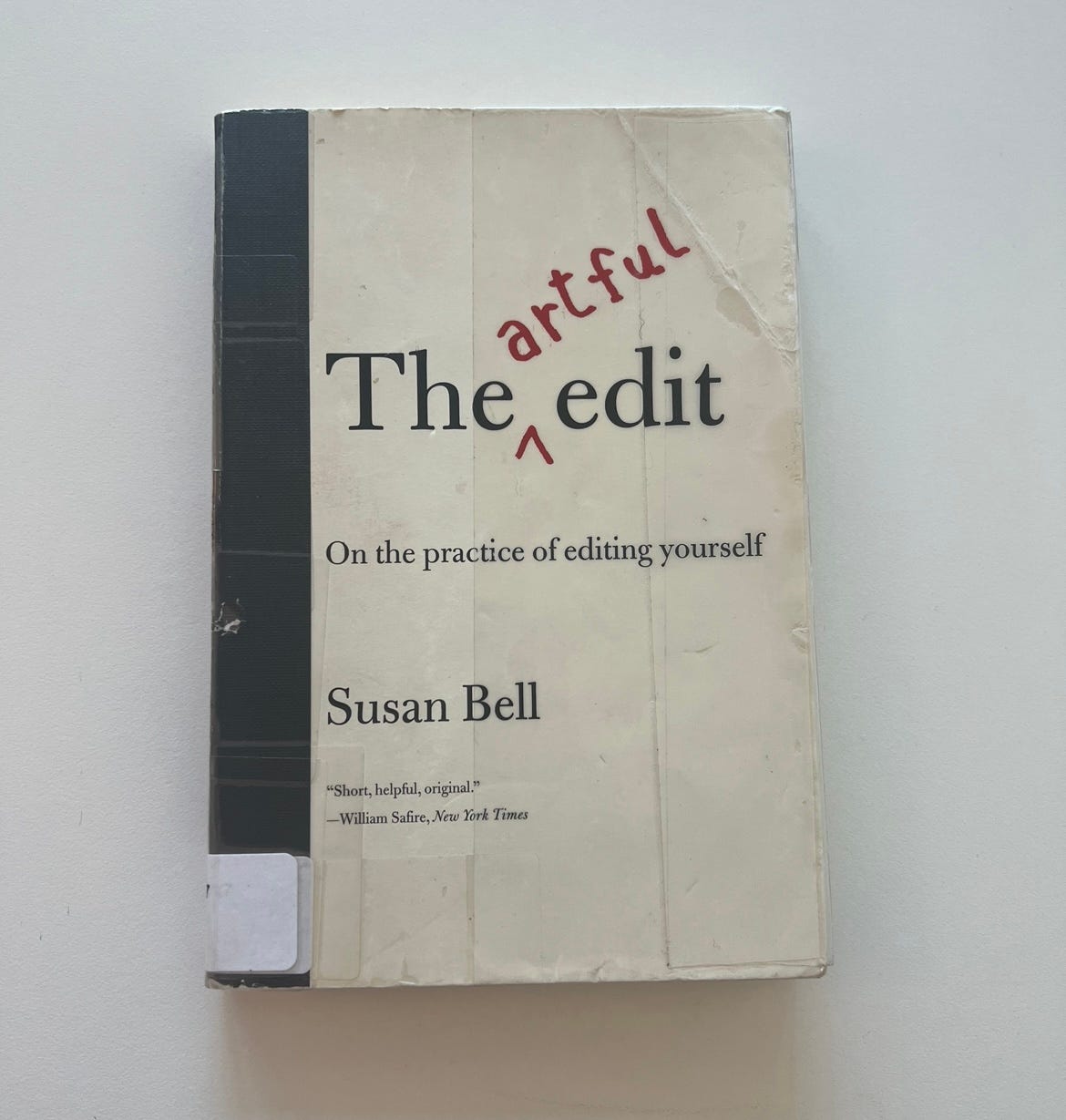#21 – On The Artful Edit by Susan Bell
A gem of a book for writers, editors and lovers of the written word
Hi friends,
I’ve recently been revisiting “The Artful Edit” by Susan Bell, a book I read (and loved!) a few years ago. It’s full of practical and wise advice, and Bell’s writing is so compelling that I would’ve read it even if the content was not applicable to what I do. In this post, I’d like to share with you some points from the book that stood out to me.
In the book’s introduction, Bell writes, “To edit is to listen, above all; to hear past the emotional filters that distort the sound of our all too human words; and to make choices rather than judgments. As we read our writing, how can we learn to hear ourselves better?”
To answer the latter question, Bell distinguishes between a macro-view and a micro-view of the text. For the macro-view, Bell considers intention, character, structure, foreshadowing, theme and continuity of tone. It is perhaps no accident that intention is the first one she delves into. Bell describes intention as the kind of gravitational force that will draw the reader in, and she suggests expressing it subtly and consistently rather than loading it up at the forefront.
Of course, our intention may not be entirely clear to us, especially at the beginning. However, even if it is not clear at the earlier stage, Bell suggests that the editing process should be used to clarify and confirm the intention. “You may take a while to know what you really mean. Fine. No hurry. But however difficult it feels to do, before you’re done, create a main line for readers to go down in your work,” writes Bell.
For the micro-view, she considers repetition, redundancy, continuity, and other different aspects of writing. Among these, her comments on clarity stood out to me with particular resonance. Bell uses The Great Gatsby for analysis throughout the book, and the examples she gave in the Clarity section were quite eye-opening. Here are three versions of the scene in The Great Gatsby where Nick and Jordan listen to Gatsby, Daisy, and Tom bicker in the Plaza Hotel.
An early draft by Fitzgerald: (pg. 113)
“I was thirty. Beside that realization their importunities were dim and far away. Before me stretched the portentous menacing road of a new decade.”
Once edited version: (pg. 113)
“I was thirty—a decade of loneliness opened up suddenly before me and what had hovered between us was said at last in the pressure of a hand.”
Twice edited version: (pg. 114)
“Thirty—the promise of a decade of loneliness, a thinning list of single men to know, a thinning brief case of enthusiasm, thinning hair. But there was Jordan beside me, who, unlike Daisy, was too wise ever to carry well-forgotten dreams from age to age. As we passed over the dark bridge her wan face fell lazily against my coat’s shoulder, and the formidable stroke of thirty died away with the reassuring pressure of her hand.”
The twice edited version is clearer, crisper and lends more to the imagination. Bell explains that clarity comes from not just cutting down what is superfluous but also from developing a new idea that illuminates the text in novel ways.
This is just one example, and Bell offers plenty more excellent ones throughout the book. The Artful Edit is filled with so much helpful advice that I find it’s worth re-reading this book every now and then. If you are a writer, editor, or just someone who loves learning more about the written word, I highly recommend The Artful Edit by Susan Bell.
Reference:
Bell, S. (2007). The artful edit: On the practice of editing yourself. WW Norton & Company.
PS: Thank you for being here! I love the cover of this book.






Okay I'm going to need this book ASAP! Thank you for sharing these helpful insights :) Another book I've loved, that's helped so much with my writing, is called "Writing Down the Bones" by Natalie Goldberg. Highly recommend that one too!